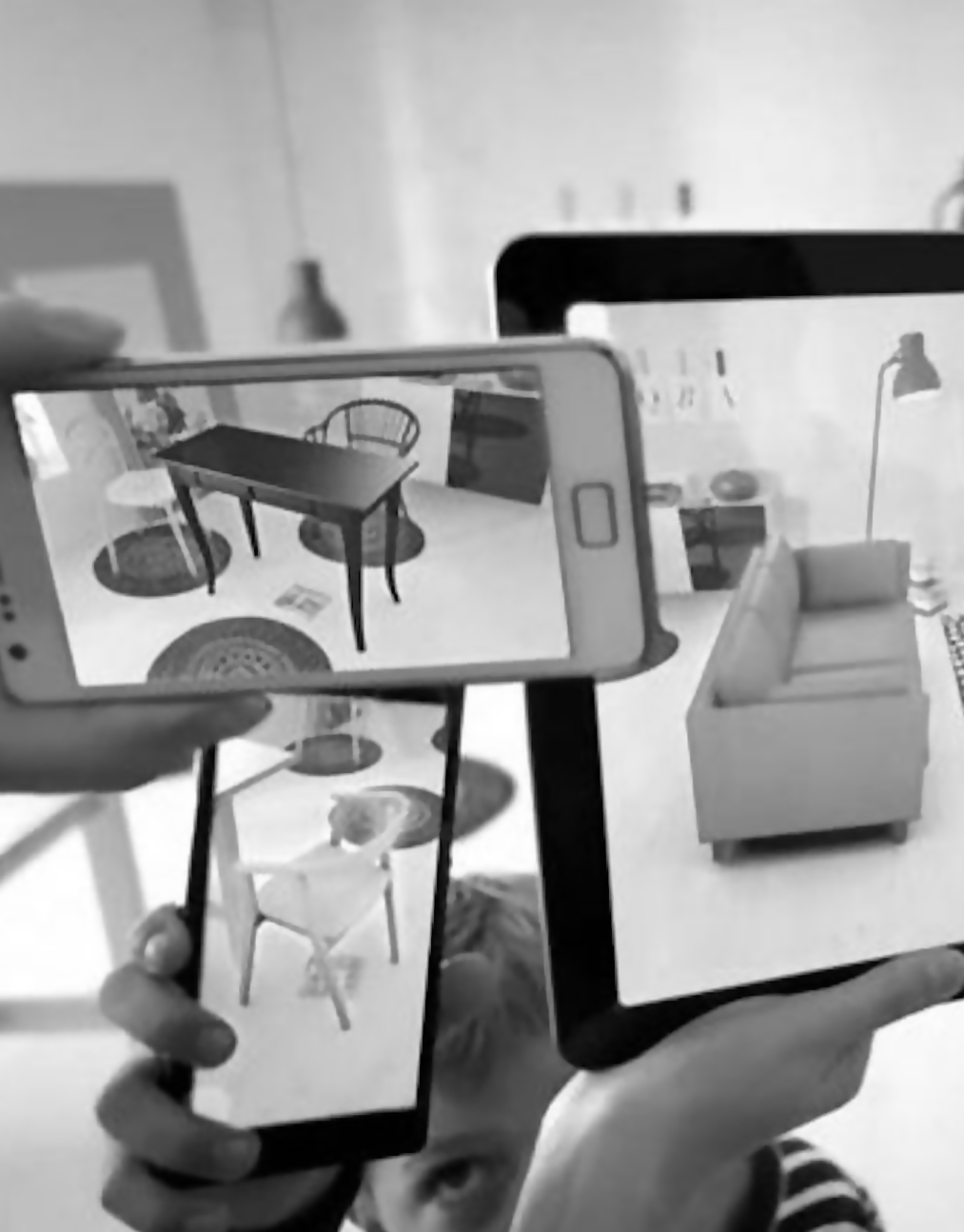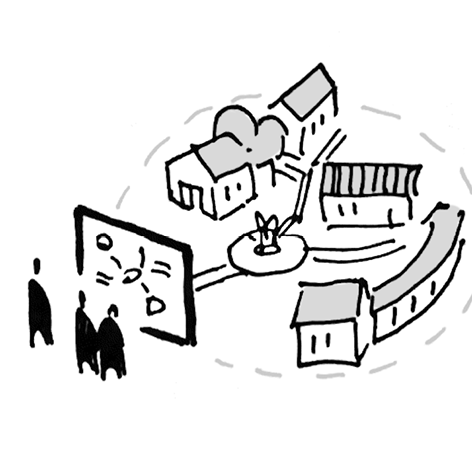…When doing Community Mockup, or as part of a Neighborhood Planning Center, provide digital tools that help residents to assess the character of proposed designs, and participate in their development.

__Problem-statement: It can be difficult for residents to visualize how a new design proposal will fit into their neighborhood.__
Discussion: New augmented reality tools are increasingly being used in design projects.¹ Evolving tools can now provide the capability for anyone with a smartphone device to see a model of a new design as if it were in front of them, by looking at their smartphone (or VR headset if they have one) as if it were a window, with the new design superimposed on the existing scene. This makes it possible for stakeholders to visualize the form and approximate character of a proposed new structure, and even to participate in the design of the structure.
For project design teams, this technology offers a potent tool for public participation, and for gathering feedback and research on evolving design ideas. The technology can also reassure stakeholders that the project is producing a desirable result. Of course, it is crucial that the design team maintain the most honest possible photo-realistic representation of the design, and not falsify it with appealing characteristics that may not be present in the actual built project.
The coming design revolution could well make architecture far more adaptive to human sensibilities. Critics of architectural education condemn how it has focused for one century on making tiny cardboard models and judging aesthetics based on them. Practitioners interested in adaptation have long argued for re-introducing real-world experience into design. This could be done through full-scale mockups, as suggested in Community Mockup. Now, with virtual reality methods finally reaching a high level of sophistication and low enough cost to be used by everyone, the situation is changing. Any individual can participate in modeling the sensory experience of a proposed design, which no longer depends upon “experts” imposing an unproven design top-down. We need no longer ignore the users’ emotional and psychological reactions in order to focus exclusively on the designers’ own aesthetic judgments.
__Therefore: Develop augmented reality tools so that they can simulate proposed designs for stakeholders.__

Use design with augmented reality in conjunction with Citizen Data projects. …
notes
¹ See for example Nee, A. Y., Ong, S. K., Chryssolouris, G., & Mourtzis, D. (2012). Augmented reality applications in design and manufacturing. CIRP Annals, 61(2), 657-679.
See more New Technology Patterns